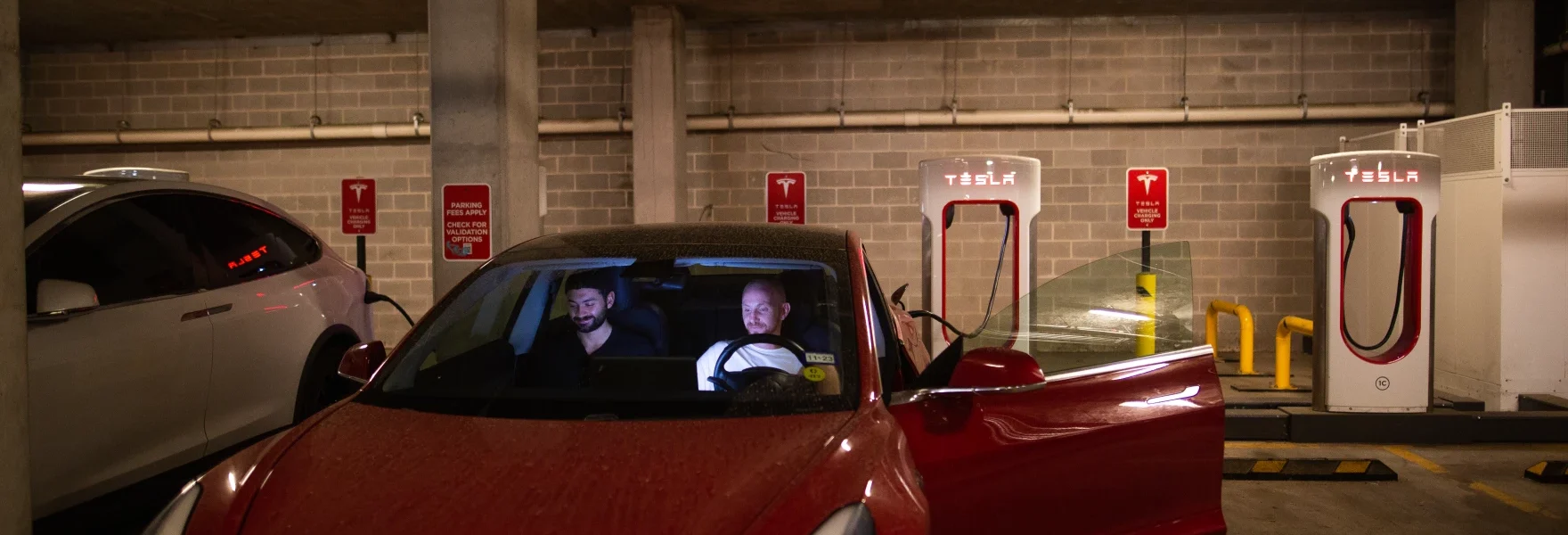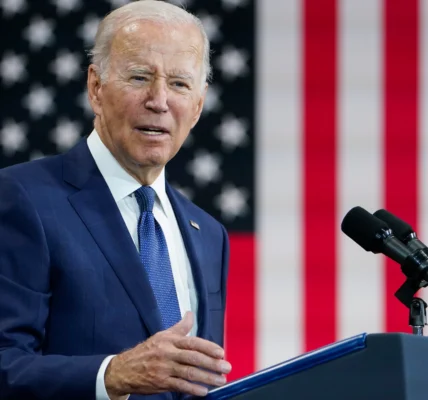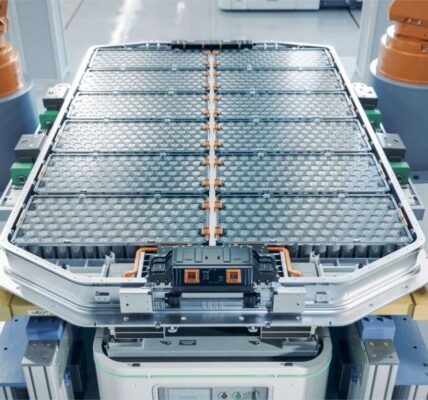More than 2.1% of registered vehicles in Travis County are now battery-powered cars and trucks, registration data obtained through the Texas Public Information Act shows. The number doesn’t include hybrids. Travis County’s EV adoption rate is the highest of the five biggest counties in the state.
More than half of the EVs on Austin’s roads are Teslas, Austin Energy says. The electric vehicle giant is based in Travis County.
A 2% adoption rate might not sound like much, but it signals “a big change that happened recently,” said Gil Tal, a leading expert on electric vehicles who runs a research center on EVs at the University of California, Davis.
For comparison, California — which leads the nation in electric vehicle adoption — is nearing a 3% EV ownership rate. The state has spent heavily to promote EVs and plans to ban the sale of new gasoline-only vehicles by 2035.
Jessie Curneal/KUTNick Allen and Davide Bonatti wait in a Tesla charging spot in a parking garage on South Congress Avenue. Tesla is by far the most popular electric vehicle in Austin, accounting for more than half the EVs on the roads.Williamson County is not far behind Travis. More than 1.5% of registered vehicles are electric in the county, and residents have been snapping up EVs at a faster clip. For example, more than 5% of Williamson County’s new vehicle registrations in September were electric. In Travis County, it was 3%.
Hays County has been slower to shift to electric vehicles. Records show 0.8% of cars and trucks in Hays County are powered by batteries.
In the state’s largest population centers — the counties where Houston, Dallas, Fort Worth and San Antonio are located — EVs account for less than 1% of vehicles on the road, Texas Department of Motor Vehicles data show.By absolute numbers, Travis County was in a virtual dead heat with Harris County for the most electric vehicles in Texas. Each had around 20,000. But Harris County has 3.4 million registered cars and trucks, more than three times the number in Travis County.Electric vehicles are popular in Austin in part because the city’s large technology industry fosters early adopters with larger incomes to bear the heftier price tag. The region’s deep-rooted environmentalist community has been trading gas pumps for charging ports, too.
“People have been interested in sustainable energy and making the world green for quite some time in Austin,” said Aaron Choate, president of the nonprofit Electric Vehicle Association’s Austin-chapter. “As soon as people were able to, they were starting to shift to electric vehicles, and I think they’re just going to continue doing so.
“Tesla’s 2,500-acre manufacturing facility in Southeastern Travis County represents a powerful corporate presence promoting EVs. The factory now employs “well over” 15,000 workers and will spend $750,000 this year on EV education programs, Tesla officials told Travis County commissioners last month, far more than required under a deal with the county to save Tesla millions each year in property taxes.Transportation remains the biggest source of Austin’s air pollution and contributes significantly to climate-warming greenhouse gases. So the city has adopted policies to encourage EV ownership, for example, by subsidizing the installation of charging stations.But Austin is still falling short of its own goals.
The city’s climate plan, adopted just two years ago, calls for 3% of cars on the roads to be electric by 2023.
The road to electrification is paved with challenges. One of the biggest barriers is how much it costs to buy an EV.








